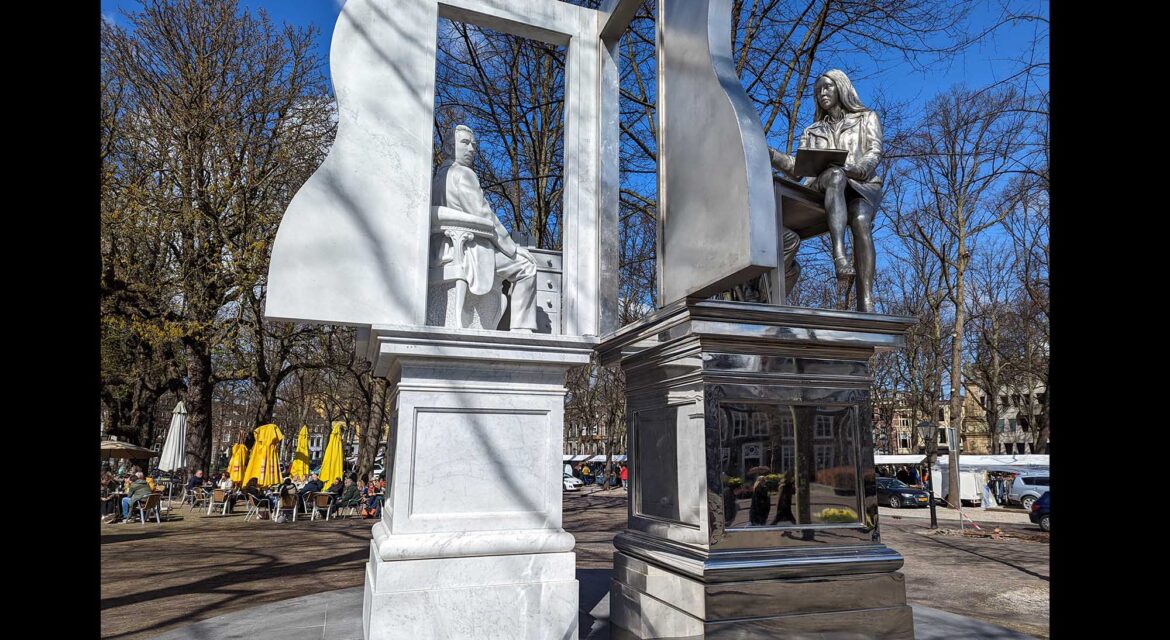 Residing near the complex of buildings in the political center of The Hague, the Thorbecke Monument celebrates Johan Rudolph Thorbecke’s contributions to the rules and laws that define the Netherlands. The monument is an especially imaginative interpretation of the legacy and history that he represents to and for the entire country.
Residing near the complex of buildings in the political center of The Hague, the Thorbecke Monument celebrates Johan Rudolph Thorbecke’s contributions to the rules and laws that define the Netherlands. The monument is an especially imaginative interpretation of the legacy and history that he represents to and for the entire country.

Celebrating the Architect of the Dutch Democratic State
 One of the most important Dutch politicians of the 19th century, Johan Rudolph Thorbecke is recognized as the architect of the Dutch democratic state. His efforts guaranteed more religious, personal and political freedom to the people of the Netherlands. In 2008, the Hague city council issued a commission for a monument to Thorbecke to effectively symbolize Dutch democracy.
One of the most important Dutch politicians of the 19th century, Johan Rudolph Thorbecke is recognized as the architect of the Dutch democratic state. His efforts guaranteed more religious, personal and political freedom to the people of the Netherlands. In 2008, the Hague city council issued a commission for a monument to Thorbecke to effectively symbolize Dutch democracy.
The marble and stainless-steel monument by Thom Pukey features two inter-connected scenarios. The marble section shows Thorbecke in a 19th-century study while the stainless-steel section depicts a modern teacher providing instruction to two students. Both scenes are connected via two open doors. The statue of Thorbecke looks towards his ‘little tower’ at the Binnenhof that he utilized during his lifetime.
The piece was designed to convey how Thorbecke’s ideas in the 19th century have influenced modern-day Dutch society and governance, showcasing where the 19th and 21st centuries meet. Pukey mentioned that featuring a woman in the modern scene highlights how her place in society has become equal, fulfilling the promise and potential of the ideas that Thorbecke championed. The setup and sculpture allow audiences to simultaneously look back toward the past and forward to the future.
Residing on the edge of a green space near the House of Parliament where Thorbecke’s life in politics was defined, the Thorbecke Monument effectively conveys how Thorbecke’s ideas in the 19th century have influenced modern-day Dutch society and governance. In doing so, audiences can interact with the legacy that he represents for the past to the future of the Netherlands as a whole.

The Evolution of Representative Monuments
 Countless monuments and statues celebrate individuals’ contributions to changing the political realities of their time but few do so in ways that connect people, eras and concepts. By being more than a figurative depiction of Thorbecke that cultivates active engagement, the Thorbecke Monument showcases what an imaginative approach to the evolution of representative monuments can look like in ways that connect audiences of all eras.
Countless monuments and statues celebrate individuals’ contributions to changing the political realities of their time but few do so in ways that connect people, eras and concepts. By being more than a figurative depiction of Thorbecke that cultivates active engagement, the Thorbecke Monument showcases what an imaginative approach to the evolution of representative monuments can look like in ways that connect audiences of all eras.

